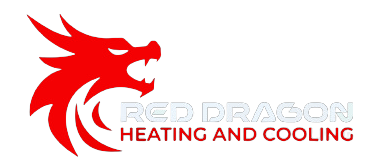- 518.348.9000
- [email protected]
- 117 Van Rd Gloversville,NY 12078
Zoning Installation: Essential Guidelines and Best Practices
Zoning installation can drastically improve the comfort and efficiency of a home’s heating and cooling system. By allowing different areas of the home to be controlled independently, zoning systems ensure each room maintains the desired temperature without wasting energy. This not only increases comfort but also reduces utility bills.
Professionally installed zoning systems can address common household issues such as hot or cold spots and varying temperature preferences among family members. The technology behind zoning systems involves multiple thermostats, dampers, and a control panel that work together seamlessly.
Whether for new constructions or retrofits, zoning installation is a practical investment. Homeowners can enjoy precise climate control while also contributing to energy conservation efforts. This advanced system stands out as an ideal solution for modern homes.

518 Red Dragon Service Areas Include :

Amsterdam
Amsterdam Zoning Installation

Gloversville
Gloversville Zoning Installation

Johnstown
Johnstown Zoning Installation

Broadalbin
Broadalbin Zoning Installation

Fonda
Fonda Zoning Installation
Mayfield
Mayfield Zoning Installation
Northville
Northville Zoning Installation

Understanding Zoning Installation
Zoning installation involves the systematic separation of a building into distinct areas to optimize climate control. This process ensures efficient energy use and enhances comfort for occupants.
Zoning Concepts and Principles
Zoning in HVAC (Heating, Ventilation, and Air Conditioning) refers to the practice of dividing a building into sections, each with its own temperature control. This system operates through dampers in the ductwork and individual thermostats for each zone.
The key principles include:
- Zone Identification: Identifying distinct zones based on needs and occupancy.
- Thermostat Placement: Strategic placement for accurate temperature readings.
- Dampers: Use of motorized dampers to control airflow.
Effective zoning can lead to significant energy savings and improved comfort.
Types of Zoning Systems
There are several types of zoning systems, each with unique features.
- Single-duct systems: Use a single duct system with dampers that modulate airflow to various zones.
- Dual-duct systems: Involve two sets of ducts, one for cold air and one for warm air, which combine to meet the zone’s temperature demands.
- VAV (Variable Air Volume) systems: Adjust airflow to maintain temperature, providing flexibility and efficiency.
- Mini-split systems: Offer individual ductless units for precise control in each zone, ideal for retrofits and small spaces.
Choosing the right system depends on the building’s layout, usage, and budget considerations. Each system has its own set of advantages suited to different applications.
Zoning Installation Process
The zoning installation process involves critical steps to ensure efficient and effective heating and cooling systems for properties. Key steps include assessing the property and needs, selecting appropriate zoning equipment, and conducting operational testing and commissioning.
Assessing Property and Needs
The first step is a thorough assessment of the property. Professionals evaluate the layout, size, and existing HVAC system. They also discuss specific heating and cooling needs with the property owner. This step is crucial because it directly influences the type of zoning system required.
Measuring square footage and identifying different zones helps in understanding load requirements. Technicians may use advanced tools for precise measurements. Accurate assessment ensures the zoning system will provide optimal comfort and efficiency.

Selecting the Right Zoning Equipment
Choosing suitable zoning equipment is essential. It depends on the property’s unique characteristics and the needs identified during the assessment. Key components include thermostats, dampers, and control panels. Selecting high-quality equipment ensures long-term reliability and performance.
Brands and models vary; professionals often recommend systems based on past performance and compatibility with existing HVAC units. It’s important to choose equipment that is easy to operate and maintain, offering user-friendly interfaces for owners.
Operational Testing and Commissioning
After installation, rigorous testing ensures everything functions correctly. Technicians test the system under different scenarios to confirm it meets the property’s needs. This includes checking airflow, thermostat operation, and damper functionality.
Commissioning involves fine-tuning the system for maximum efficiency. Adjustments may be necessary to perfect airflow and temperature control. This stage is vital for identifying and resolving any potential issues before they affect the occupant’s comfort.
WHAT WE DO
Expert HVAC Care, Always.


Residential Installations
Trust us to transform your space into a haven of perfect climate control with our expert HVAC installations.

Commercial Installations
Trust us to transform your space into a haven of perfect climate control with our expert HVAC installations.

Thermostat Installations
Trust us to transform your space into a haven of perfect climate control with our expert HVAC installations.

Air Quality Solutions
Trust us to transform your space into a haven of perfect climate control with our expert HVAC installations.
